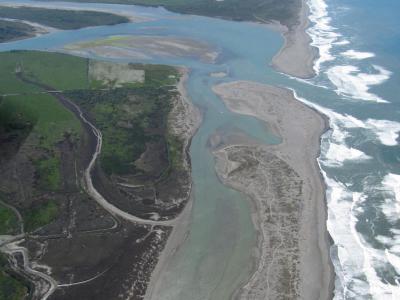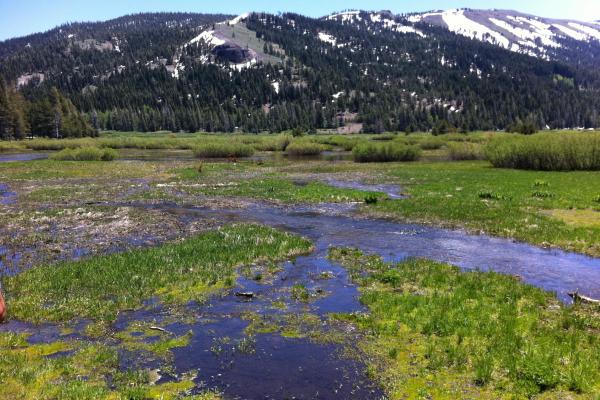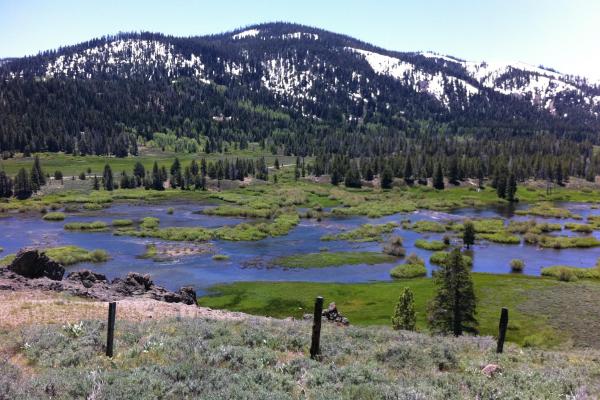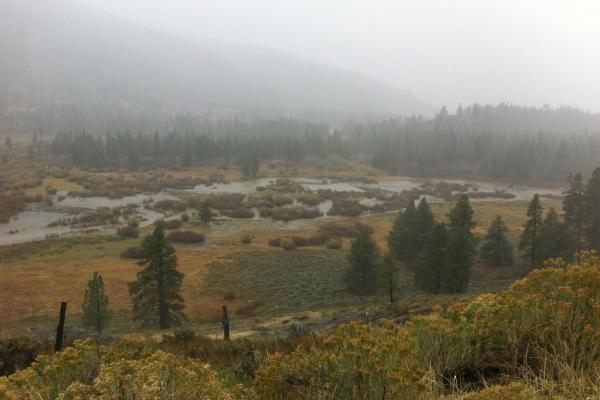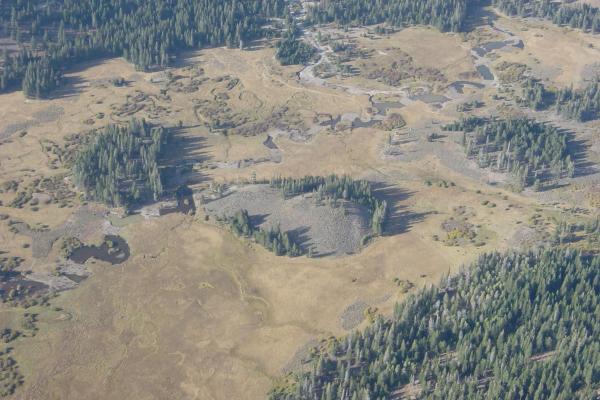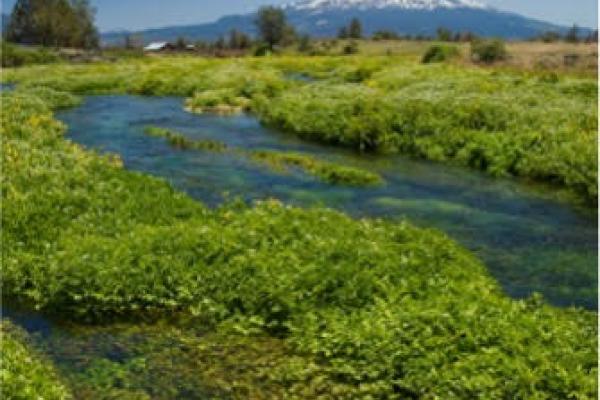Instream Flow Enhancement and Groundwater Recharge Planning
Workshop Coordinators:
Lisa Hulette, The Nature Conservancy
Tasha McKee, Sanctuary Forest
Coho salmon in California are on the brink of extinction, and if current trends continue, Chinook salmon and steelhead trout are close behind. Dependent largely on the small forested tributaries of the Coast Ranges for spawning and the first year of their lives, salmon populations have been significantly reduced by the devastating effects of logging, agriculture, and urbanization. Populations of coho salmon in the state have fallen from more than 500,000 fish to fewer than 5,000 in less than a century.
Water scarcity issues now pose the single biggest threat to salmonid recovery. Drought, land use impacts and human water use are all contributing factors. With climate change and prediction of future droughts we are urgently called upon to restore ground and surface water hydrology and develop conservation programs to reduce human use impacts.
This workshop will address streamflow and groundwater recharge science, including project implementation, resource management challenges and new policy directions designed to provide salmon and steelhead the best chance for survival across their freshwater life-cycle. Presenters will discuss strategies for increasing instream flow from state wide action plans to water conservation and transaction programs to restoration of ground and surface water hydrology. Several different approaches to groundwater recharge will be presented in different settings such that participants will walk away with a broad understanding of techniques and their application. An interactive groundwater planning exercise will take participants through the steps of preliminary assessment and planning of groundwater recharge projects. Two contrasting project types will be used for the exercise and participant teams will be assisted in the preparation and sharing of a groundwater recharge project. Permitting for groundwater recharge projects will also be addressed including the new Water Quality Certification for Small Habitat Restoration Projects.
Instream Flow Enhancement and Groundwater Recharge Planning: Part 1
California Water Action Plan; Enhance Water Flows in Stream Systems Statewide
Daniel Worth, State Water Resources Control Board
Policy Analysis and Implementation of the Sustainable Groundwater Management Act (SGMA)
Pablo Garza, Associate Director State and External Affairs, The Nature Conservancy
Providing Flows for Salmonids in Drought Years and Beyond
Daniel Schultz, State Water Resources Control Board, Division of Water Rights, Public Trust Unit
South Fork Eel River Water Conservation Program —Sproul Creek Instream Flow Study
Darren Mierau, North Coast Director, California Trout
South Fork Eel River Water Conservation Program —A Variable Diversion Rate Strategy for Coastal Watershed Management
Dr. William Trush, Humboldt State University River Institute
Effect of Water Transactions on Water Quality and Adult Fall-Run Chinook Salmon in the Shasta River
Ann Willis, University of California Davis Center for Watershed Sciences
Instream Flow Enhancement and Groundwater Recharge Planning: Part 2
Aquatic Habitat Is More than Skin Deep - Linkages Between Human Activities, Reduced Groundwater Abundance, and Aquatic Ecosystem Health
Brad Job, Civil Engineer, Pacific Watershed Associates
Reconnecting Hillslope Hydrology- Road Run-Off and Infiltration
Joel Monschke, Civil Engineer and Geomorphologist, Stillwater Sciences
Meadow and Floodplain Restoration and Active and Passive Groundwater Recharge
Eric M. Ginney, Environmental Science Associates (ESA)
Quantifying Groundwater Recharge and Storage Increases from Meadow Restoration in the Sierra Nevada
David Shaw, P.G., Balance Hydrologics, Inc.
Restoring an Incised Coastal Stream- Groundwater Recharge Outcomes
Tasha McKee, Sanctuary Forest, and Brad Job, Pacific Watershed Associates
Interactive Groundwater Planning Exercise, Joel Monschke, Stillwater Sciences
Tasha McKee, Sanctuary Forest and Eric M. Ginney, Environmental Science Associates (ESA)
Permitting Groundwater Recharge Projects —Permit Pathways and Lessons Learned
Tasha McKee, Sanctuary Forest, and Joel Monschke, Stillwater Sciences

